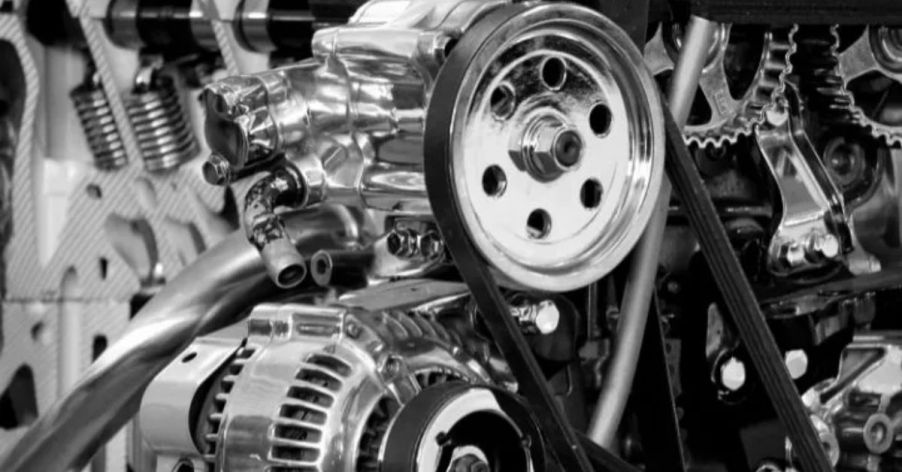
Timing Chains: Uses, Durability, and Replacement

Timing chains are an essential component of internal combustion engines. They are critical for the engine’s proper function, dictating when the intake and exhaust valves open and close. Let’s take a closer look at their uses, factors that affect their durability, and replacement guidelines.
Engine Valve Timing

Timing chains ensure the crankshaft and camshaft(s) rotate in sync. This synchronization ensures that the engine’s valves open and close at the correct intervals during the intake and exhaust strokes. Proper valve timing, in turn, optimizes engine performance, fuel efficiency, and emissions control.
Durability in High-Performance Engines

Timing chains are used in high-performance and heavy-duty engines because of their strength and durability. Unlike timing belts, made from rubber, timing chains are made of metal, hence, more resistant to heat and stress. They are ideal for high-revving engines found in sports cars.
Low Maintenance

One advantage of timing chains over timing belts is that they require less maintenance. Timing chains are built to last as long as the engine or a substantial portion of time. This reduces the need for regular replacements, thus minimizing the total cost of car ownership.
Noise Reduction

In modern engines, timing chains are often used with tensioners and dampers to reduce noise. Early timing chain designs were prone to generating noticeable noise during operation. However, advancements in chain materials design and the use of hydraulic or spring-loaded tensioners have significantly reduced this.
Compatibility with Overhead Camshaft (OHC) Designs

Timing chains are well-suited for engines with overhead camshaft (OHC) designs. In OHC engines, the camshaft(s) is located above the cylinder head(s). Because of their ability to maintain tension over longer distances, timing chains are more suitable than timing belts for this application.
Variable Valve Timing (VVT) Systems

VVT systems adjust the timing of the engine’s valve operation to improve performance, fuel efficiency, and emissions. Therefore, they need timing chains to provide the necessary precision for the complex movement of the camshafts. The chain’s strength also helps it handle the added stresses imposed by VVT systems.
Heavy-Duty and Commercial Vehicles

Heavy-duty and commercial vehicles, including trucks, buses, and industrial machinery, use timing chains. These vehicles often operate under extreme conditions and for long hours, placing significant demands on the engine’s components. Timing chains can withstand the high loads, temperatures, and continuous operation typical in these environments.
Support for Direct Fuel Injection Systems

With the rise of direct fuel injection technology, which pumps high-pressure fuel into the combustion chamber, precise timing of the engine’s components has become even more vital. These systems need timing chains to ensure the crankshaft and camshaft remain perfectly synchronized.
Material Quality

One factor that affects the durability of a timing chain is the material used in its construction. High-quality timing chains are made from hardened steel or other alloys that resist wear and tear. Manufacturers often enhance chain durability by using advanced coating technologies, like nitriding or coating with materials like molybdenum.
Lubrication

Proper lubrication is important for the chain’s longevity. Timing chains operate inside the engine, relying on continuous oil flow to reduce friction between moving parts. Low oil levels, poor oil quality, or infrequent oil changes can lead to increased wear, excessive heat buildup, and eventual chain failure.
Engine Load and Stress

The amount of load you place on the engine impacts the timing chain’s lifespan. Engines subjected to high loads, like those used in performance vehicles, put extra strain on the timing chain. High RPMs and heavy acceleration can cause the chain to stretch or wear.
Tensioner and Guide Wear

The timing chain works with tensioners and guides, which keep it properly aligned and at the correct tension. These components can wear out due to friction and cause chain misalignment or slack. A worn-out tensioner can cause the chain to rattle, jump teeth, or even break.
Engine Maintenance

Regular engine maintenance, including repairs of minor issues, can prolong a timing chain’s life. Neglecting engine maintenance can lead to oil contamination, sludge buildup, and other issues that affect the timing chain’s performance. For example, carbon deposits can clog oil passages, reducing lubrication to the chain.
How Often Should You Replace a Timing Chain?

Unlike timing belts, timing chains are designed to last (almost) as long as your vehicle, usually 150,000 to 200,000 miles. However, this does not mean they are immune to wear and tear. Routine engine maintenance helps keep the timing chain functional.
How to Replace a Timing Chain

The first step is disconnecting the vehicle’s battery and setting the engine to the top dead center (TDC). Remove the old timing chain by unbolting the timing cover and releasing the tensioner. Install and carefully align the new chain with the camshaft and crankshaft gears.


